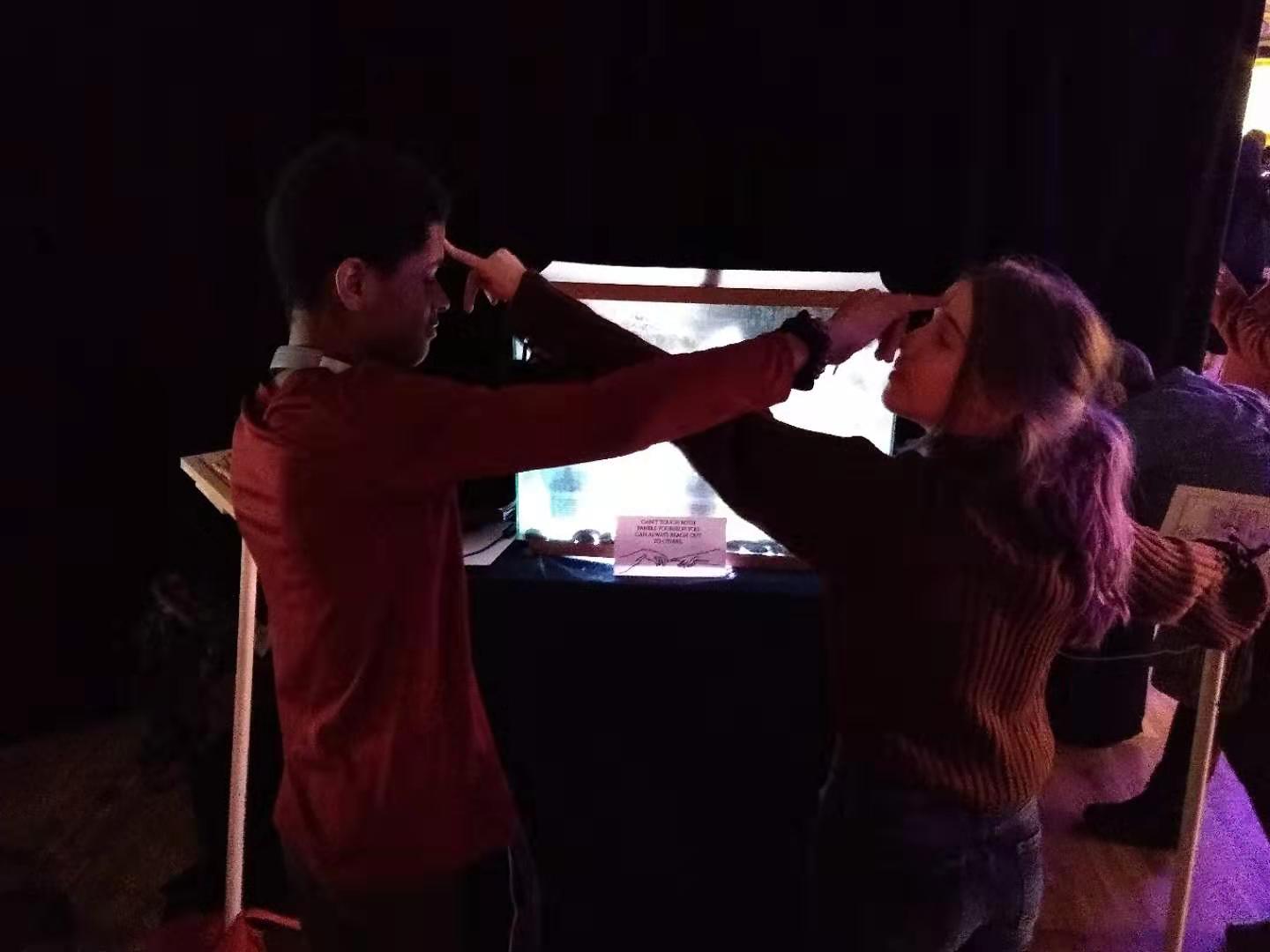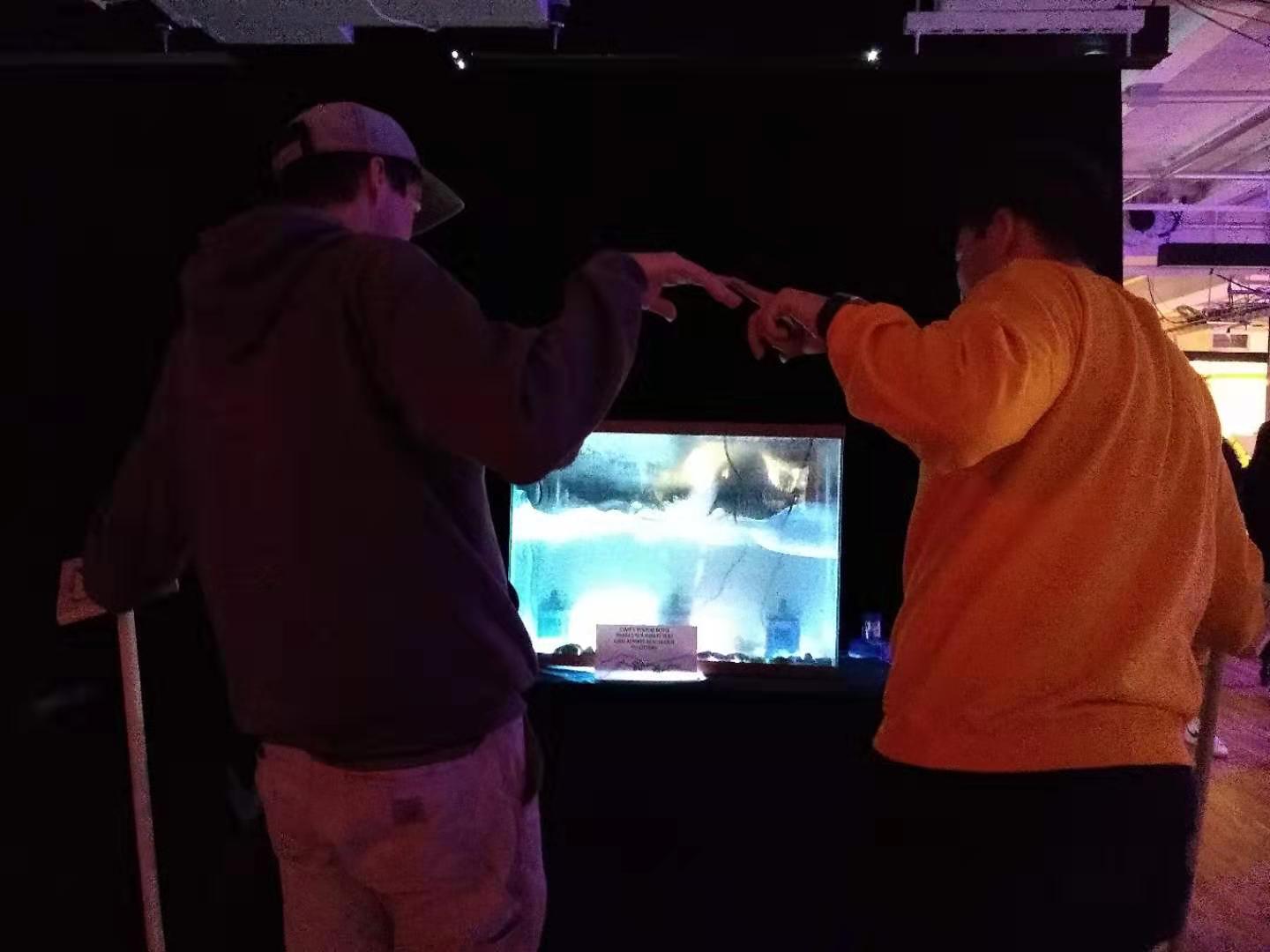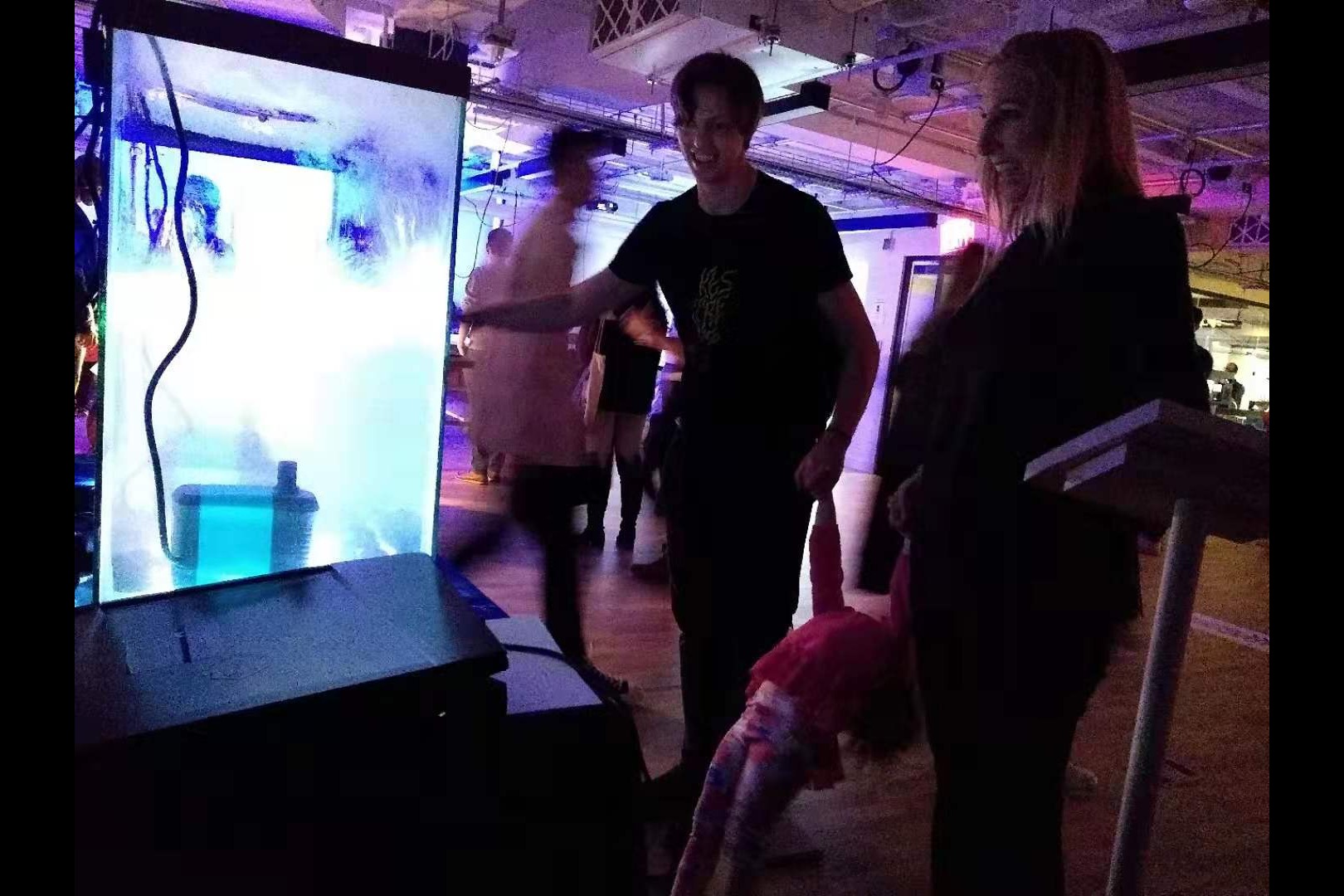Liquid RelationshipsA touch-and-water-based interactive installation about forming connections.
Here's a little demo from the ITP showcase -- thanks Daniel Shiffman!
ConceptThis project was born of three desires: the desire to make something that used an interesting or unconventional material (in this case, water) to convey its themes, the desire to build something that would connect multiple people, and the desire to make something that had an element of surprise or delight to it, something the user could discover as they interacted with it.

The capacitive touch works anywhere on the body as long as bare skin is touching bare skin, as you can see here!

Standing in front of the tank turns on the lights, but the pumps only turn on after the users touch each other.
Tools
- Arduino Nano 33 IoT
- Adafruit Neopixels
- 60 gallon fish tank
- DIY pressure sensors (cardboard, aluminum foil, electronics)
- DIY capacitive touch sensors (wood, aluminum foil, electronics)
- Acrylic
- KEDSUM submersible water pump (3x)
In this picture you can see the pressure sensors near the bottom. Standing on them turns on the lights lining the underside of the tank.
Here you can see the project as it looks before any user interaction has occurred.
MechanismsThe finished product has two interactions. The first, and more obvious, occurs when people stand on the two pressure pads at the same time. This triggers a light show which shines through the bottom of the tank. There are also two touch pads on either side of the tank; when the participants on the pressure pads place their hands on the touch pads and then touch each other, the second circuit is completed and the pumps in the tank turn on. This sends a flurry of reflective particles through the water, which catch the light.
I'm very proud of my project, and here's the proof.

As you can see, it's possible with more than two people, too! We tested it with up to 10 people, and it still worked!
ReflectionsThis was the first large-scale interactive work I made, and it taught me a lot about how to design interactive projects -- looking back, it's clear to me how the project is mostly function and lacks a bit in the design factor.